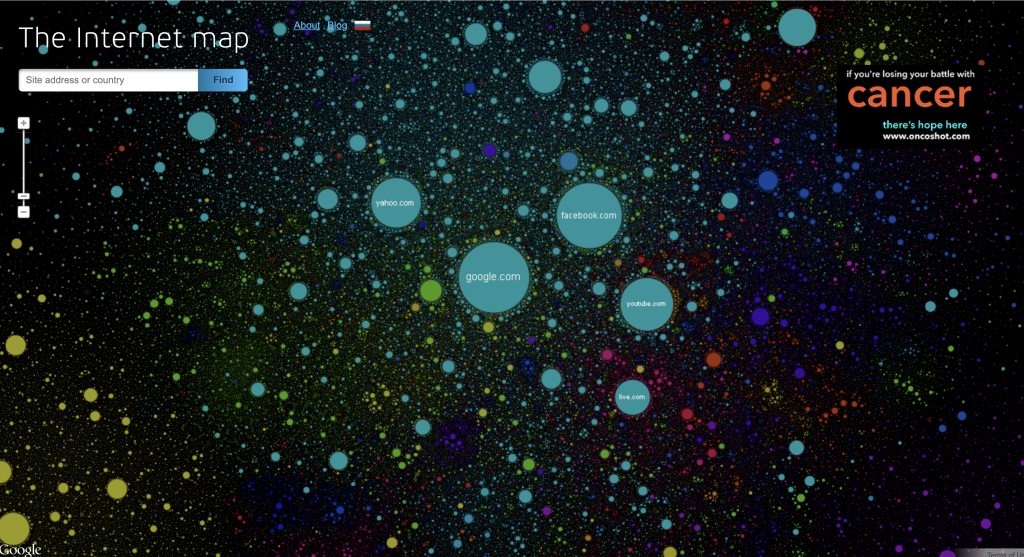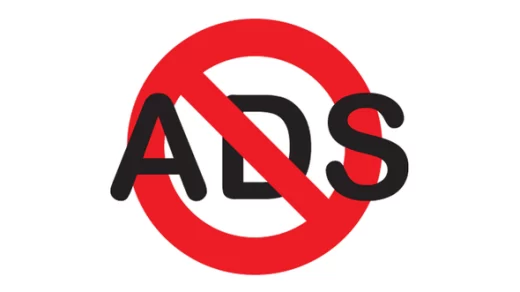A little bit of context :
We all know the internet as an intangible entity, a digitized world on its own. However, the internet has a physical reality. In this three posts series, we will explore three representations of the internet. We will question them and challenge those representations with the reality of the internet to see how accurate they are.
3 – Digital representation : map of the web

When I first had the idea of this subject for my blog, the first thing that came to my mind was a map. You see, when we talk about physical representation, I immediately think of schemas. Obviously it is a biased view, maybe lead by my interest in math but still it is the way a lot of people see the world and – which is more – the way the internet represent the physical world.
Then came to my mind a question : “can we map the internet ?”. The answer is yes of course. We all learned about bots crawling “the web” mapping and indexing information. It is the very purpose of DNS servers that gives your device access to this map. Ok this was the easiest research I have done for this blog.
But can we look further ? I mean this is a microsoft server : 192.168.123.132. Where is it ? Is it connected to other servers ?
Ultimately the question is : how can we see the navigation of the information ?
Luckily for me, a bunch of french data scientists are working on the subject. They call themself “internet’s geographers”. To map the web, they use the same crawling bots we talked about not to index but to link pages. Those bots use the hypertext function which is the function that allows us to pass from a page to another. For instance, all the blue links are hyperlinks. This way they can know which page links to which page and form a hierarchy from the frequency of the pages (how many pages link to one particular page). This kind of map of the web can be made at different scales and for different informations. Once the information from the bots are processed, they can be shown with different representations. The most used are the galaxy and the link cloud.


In this image you can see the web in 2011. The closer a dot is to another, the more similar websites they are. This is a galaxy representation found on https://internet-map.net/ .
In this second image, you can see a representation of the web on the subject “top 50 music artists of 2021 in France under the form of a link cloud.

One could argue that my subject was physical representation of the web and that these representations are still digitized. However, I am a philosophy student and therefore I like to question the meanings of words. In this case, the researchers gave a physical appearance to something we can only speculate upon giving it an appearance in reality.
On another matter, I find this kind of representation or more accurately the lack of this representations questioning. Indeed, as long as we don’t know what the internet looks like, we can’t understand it. And it reminds me of Clarke 3rd law : Any sufficiently advanced technology is indistinguishable from magic. But the thing is the internet is not magic and people believing it is and using it this way is, to my opinion, the very reason that many people get scammed or their data stolen and used. This is the reason I choose to write this series of blogs.
I personally heard about it through the concept of OSINT. A French laboratory in geopolitics of data called Geode uses the method above to map the web around conflicts and political situations. This way they can link web pages activity but also people and groups. For instance, they could prove the modus operandi of Russia’s troll farms. This kind method of investigation is called OSINT and reveals a new kind of journalism but I will write about it in another blog.



Recent Comments